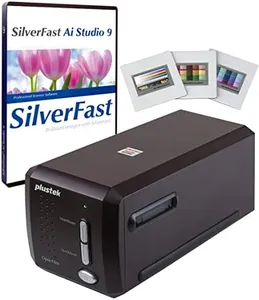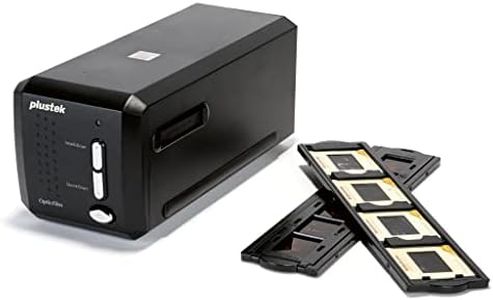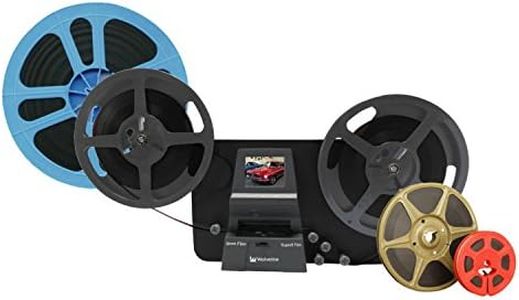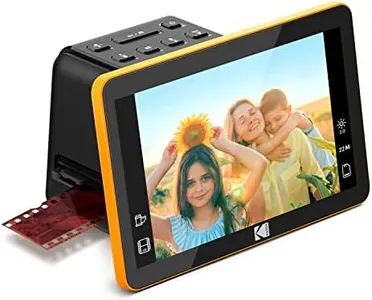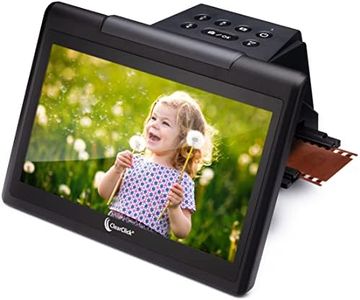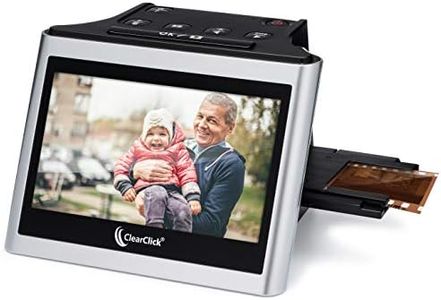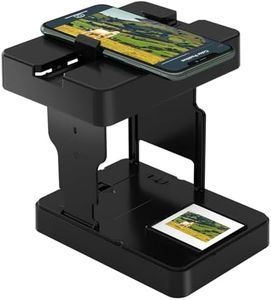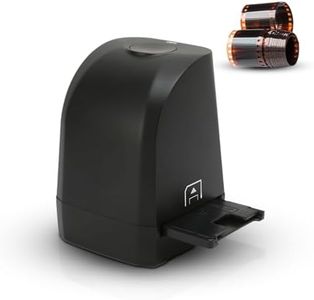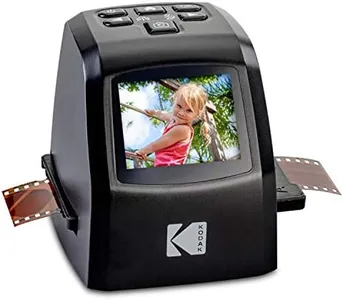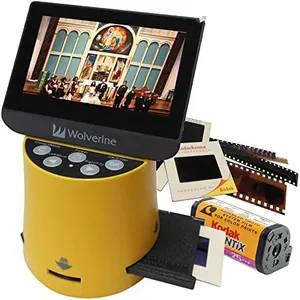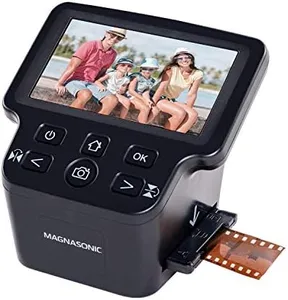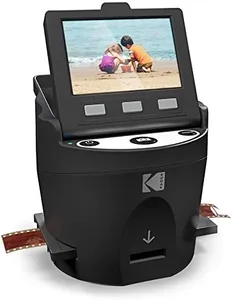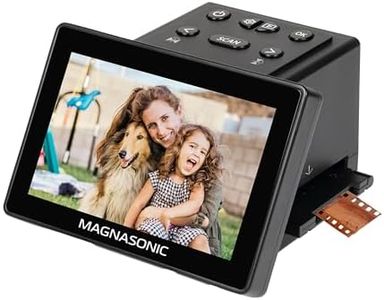We Use CookiesWe use cookies to enhance the security, performance,
functionality and for analytical and promotional activities. By continuing to browse this site you
are agreeing to our privacy policy
10 Best Digital Slide Converters
From leading brands and best sellers available on the web.By clicking on a link to a third party's website, log data is shared with that third party.
Buying Guide for the Best Digital Slide Converters
Digital slide converters are handy devices used to convert old photo slides and negatives into digital images you can view, edit, and share on a computer or smartphone. Choosing the right converter is about understanding your own collection—whether you have lots of family slides, different film formats, or just a few reels to digitize. Your goal is to find a device that matches your needs in terms of quality, ease of use, and compatibility with your slides and workflow.ResolutionResolution refers to how sharp and detailed the final digital image will be, usually measured in dots per inch (DPI) or megapixels (MP). A higher resolution captures more detail, which is especially important if you plan to print or zoom into the images. If you mainly want to view photos on a screen, a lower resolution might be enough, but for archiving family memories, scanning artwork, or large prints, a higher resolution is better. Most users will find that mid-range resolutions balance quality and file size well, but heavy archivers or professionals might want the highest settings.
Film CompatibilityFilm compatibility refers to the types and sizes of slides or negatives the converter can handle, such as 35mm slides, 110 film, 126 film, or even medium format. It’s important to check what you have at home and make sure the converter supports those specific formats. If you only have standard 35mm slides, most devices will work, but if your collection is mixed, look for a converter with broad compatibility.
Scan Speed and Batch ScanningScan speed indicates how quickly the device can convert each slide or negative. Some converters can process slides one at a time, while others offer batch scanning, letting you load multiple slides or strips at once for faster processing. If you have a lot of slides, a faster device or one with batch scanning can save hours of work. For occasional or small collections, speed may be less important.
Ease of UseEase of use covers the design and user interface of the converter, such as whether it has a display, intuitive buttons, or simple slide-loading trays. If you prefer simplicity or are new to digitizing slides, look for a device with clear instructions, labeled buttons, and a screen so you can preview your scans before saving. More advanced models might offer additional settings but could be harder for beginners.
Digital Output and ConnectivityDigital output refers to how the converter saves your files—on an SD card, directly to a computer, or even to a smartphone. Connectivity options like USB or Wi-Fi can affect how easily you move, edit, and share your images. If you want instant access to your scans on your computer or need to edit quickly, direct connection is useful. For standalone use or archiving without a computer, SD card storage is convenient. Choose the output method that best matches where and how you plan to store and enjoy your digital images.
Image Editing and Enhancement FeaturesSome slide converters come with built-in features for automatic color correction, dust removal, or editing options like cropping. These features can improve the quality of old, faded, or damaged slides and save time in post-processing. If preserving the best image quality with minimal effort is important to you, pick a converter with good enhancement features. If you’re comfortable with third-party editing software, you may not need as many built-in options.

